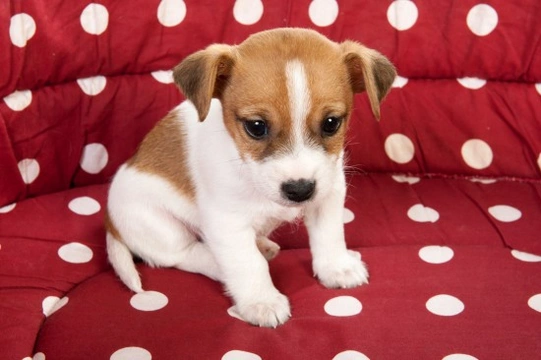
Puppy Toilet Training
From a very young age, puppies naturally understand the concept that it is not nice to soil their own nest, and from as young as three weeks old will begin to move away from their bedding in order to go to the toilet. This means that puppy toilet training should be a relatively straightforward undertaking, as you are not asking the puppy to learn something that is outside of the realm of their understanding, but simply pointing them in the right direction and enabling their natural needs by showing them where to do their business.
Because toilet training is generally the very first training or direction that your puppy will receive from you, it is important that you go about it in the right way. This bonding experience will lay down the groundwork for your later training endeavours, and begin to teach your pup about interaction with you as well as about where to go to the toilet.
Read on to learn more about the basics of puppy toilet training.
When to begin toilet training
When your puppy is very small (between the age at which they are weaned and the age when they are able to go outside in public areas and meet other dogs) you may not be able to take them outside as frequently as they will need to go. This can be as often as every couple of hours, and sometimes during the night as well.
However, puppy toilet training should begin as soon as you get your new puppy home at the age of at least 8 weeks old. This is not only to get them into the routine of going to the toilet in the designated place, but to ensure that you do not hamper their natural development in terms of moving out of their living area to do their business.
You should always account for the age of your puppy and the level of their understanding when beginning toilet training, but there is no such thing as “too young” to toilet train once your puppy has been weaned!
How to begin
Set up an indoor toilet area for young puppies near to the door that you will ultimately use to take them outside for toileting. Make sure that this area is distant enough from their bedding and food and water, but still within their sight and somewhere safe for them to feel happy using it.
Place puppy toilet training pads or even newspaper down on the floor in this area, and encourage your dog to go to the toilet there during the times that they cannot go outside.
Take your young puppy outside to go to the toilet every hour when this is possible but every two hours at most, and praise them heartily if they actually go to the toilet while outside.
As time goes on and your puppy grows larger, you will find that the gaps between when they need to go to the toilet get longer, and you can reduce the frequency of your trips outside.
Learn to read the signs
If you spot your puppy heading over towards the door or the puppy training pads, your pup may be telling you that they want to go to the toilet. If you spot this, try to intercept them on the way to the puppy training pads and take them outside. Do this immediately and don’t make your puppy wait; it is important that your puppy learns that if they ask to go out, you will respond to their needs.
Within fairly short order, your puppy will come to understand that this is the case, and show clear signs of wanting to go out to use the toilet. Be alert for your puppy whining and pawing at the door, sniffing and snuffling at the ground looking for a place to go to the toilet, or crouching to pee or hunching up to defecate. At this stage, if you are quick, you can usually encourage your pup to hang on for a second while you open the door, and they will learn to ask to go out in future.
When to take your puppy out to go to the toilet
Once you have established that your puppy is old enough to go more than an hour or two without toilet breaks, use the following guidelines for when to offer them the chance to go outside:
- First thing in the morning
- After they have had a meal
- After play or excitement, for instance, having visitors over
- Last thing at night
- Any time that they ask to go out, or regularly go to the toilet
Make the experience positive
Make sure that your puppy is happy and relaxed enough to go to the toilet when given the chance! Stay with them in the garden so that they concentrate on doing their business, rather than where you have gone; but give them enough space so that they do not feel watched!
Reward your puppy with a treat or praise after they have been to the toilet, so that they build up positive associations with toilet training and the training and reward process.
Never punish your puppy for inappropriate toileting, lack of understanding, or not always getting things right.



